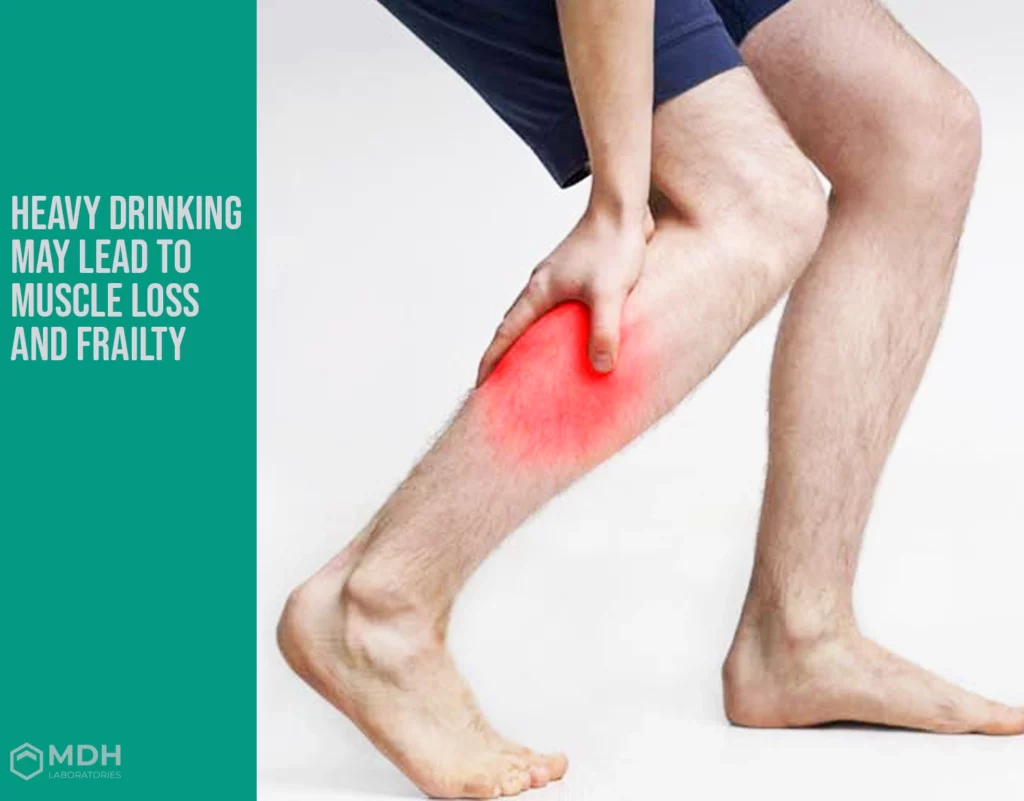Original Source
Heavy Drinking Could Be Jeopardizing Your Muscles
By UNIVERSITY OF EAST ANGLIA
Recent study (Univ. of East Anglia) links heavy drinking, especially in those aged 50s and 60s with 10 daily units, to muscle loss and frailty in later life. High alcohol intake relates to lower muscle mass, underscoring risks in middle and early old age.

According to a recent study conducted by the University of East Anglia, heavy alcohol consumption may pose a threat to muscle health and increase the risk of frailty in older individuals. The research, which relied on statistical models, revealed that those who consumed a minimum of 10 alcohol units daily, roughly equivalent to one bottle of wine, exhibited the least muscle mass.
To ensure the accuracy of their findings, the researchers adjusted their analysis for factors such as body size, physical activity levels, and protein intake.
The study primarily focused on people in their 50s and 60s.
Professor Ailsa Welch from UEA’s Norwich Medical School emphasized the significance of muscle preservation as individuals age, stating that muscle loss can lead to weakness and frailty in later life. Given that alcohol consumption is a modifiable risk factor for numerous health issues, including muscle health, the study sought to explore the relationship between alcohol intake and muscle health in the aging process.
The study was based on data from the UK Biobank, a comprehensive database containing anonymized lifestyle and health information from over half a million individuals in the UK. The researchers examined data from nearly 200,000 participants aged between 37 and 73.
Dr. Jane Skinner, also from UEA’s Norwich Medical School, described their methodology: “We studied how much alcohol people were drinking and compared it with how much muscle they had, according to their body size. We also took into account things like how much protein they consumed, their levels of physical activity, and other factors that could make a difference to how much muscle they might have. Most of the people were in their 50s and 60s. We found that those who drank a lot of alcohol had a lower amount of skeletal muscle compared to people who drank less, after we took into account their body sizes and other factors.”
The study indicated that the problematic threshold for alcohol consumption and its impact on muscle mass was reached when individuals consumed 10 or more units per day, equivalent to approximately a bottle of wine or four to five pints. While the study showed an association between alcohol consumption and muscle mass, it was unable to establish a causal link.
Professor Welch concluded that the study underscores the potential harm of excessive alcohol consumption on muscle mass, particularly in middle and older age. Preserving muscle mass is essential for maintaining strength and avoiding frailty as individuals grow older.
The research paper, titled “Alcohol Consumption and Measures of Sarcopenic Muscle Risk: Cross-Sectional and Prospective Associations Within the UK Biobank Study,” was published on May 25, 2023, in the journal Calcified Tissue International.

